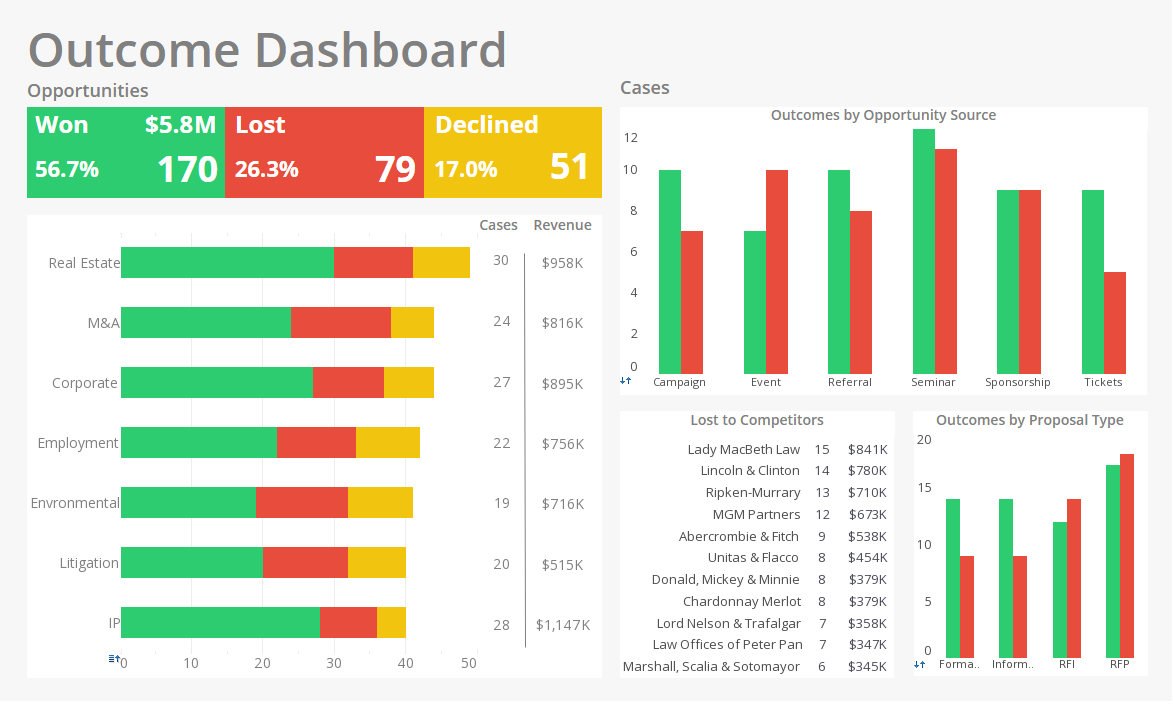How Does an IT Organization Support a KPI Project?
Below is the continuation of the transcript of a Webinar hosted by InetSoft on the topic of Best Practices for Key Performance Indicators. The presenter is Mark Flaherty, CMO at InetSoft.
Mark Flaherty (MF): Sometimes, when these initiatives are being driven by the Business, some IT organizations might look at it as just another job, and they don’t need any more jobs. You know those marketing people want more metrics, they’re forcing a BI application on us, we don’t get any value out of it, and it’s one more application to care for and feed. We have less people, we don’t need this.
The more progressive IT organizations who are thinking ahead, have taken the driver’s seat and look at things totally differently. They say, all right, how can we also get something out of this BI solution, how can we help pick the solution that’s going to help the business the most.
Some people say nowadays IT is getting a loud wake-up call. It’s either shape up or ship out. Up until a few years ago, business depended 100% on IT for the delivery of these KPI dashboards and metrics and reporting systems. Today in a lot of cases businesses can use technology and tools out there such as software-as-a-service on their own.
So if you still have a misalignment of business and IT, business people are becoming much more empowered. IT is certainly not becoming obsolete for infrastructure, security and operational risk. But specifically in the area of performance management and BI, IT has a challenge. They almost have to prove themselves in this market all over again because today people can often go around them.
But I think it would be a mistake to let that happen because there are still going to be limitations when it comes to depending on an external vendor to provide the BI environment. Most of the data will still be generated internally, and as the business changes, and the metrics need to change, how agile can a cookie-cutter SaaS based BI provider be? You don’t want to hamstring your business because in the long-run IT needs the business to succeed to keep their jobs. |
View a 2-minute demonstration of InetSoft's easy, agile, and robust BI software. |
Why Do Dashboard Users Need Self-Service Capabilities?
Dashboard users increasingly need self-service capabilities because they allow for greater autonomy and agility in data analysis. In traditional setups, users have to rely on IT or data specialists to create and modify dashboards or generate reports, which can lead to delays and miscommunication. By empowering users to build their own dashboards and reports, self-service BI tools remove this bottleneck, enabling quicker decision-making. When business users can independently interact with data, explore trends, and generate insights, they respond more effectively to changing business conditions without waiting on the availability of technical staff.
Self-service capabilities also democratize data access across organizations, making data-driven decision-making a standard practice rather than the domain of a few experts. By giving users of all skill levels the ability to create visualizations, explore datasets, and perform basic analytics, organizations can harness the collective intelligence of their workforce. When employees across departments, from marketing to finance to operations, have direct access to relevant data, they can make better-informed decisions that improve their specific functions. This widespread access to data encourages a data-driven culture, where insights are shared, and data literacy is elevated throughout the organization.
Another advantage of self-service dashboards is their ability to accommodate the unique data needs of different users. In many cases, the standardized reports generated by IT departments may not address the specific metrics or perspectives that certain users are interested in. Self-service tools allow users to customize their dashboards, applying filters, creating new visualizations, and exploring different data dimensions that are most relevant to their roles. This tailored approach not only enhances the user experience but also ensures that insights are more actionable because they are directly aligned with the specific goals and KPIs of each department or individual.
In addition to personalizing insights, self-service capabilities help to improve data quality and governance. When users have access to self-service tools, they can explore data to identify inconsistencies, outdated information, or other issues directly, which might otherwise go unnoticed in a centralized reporting model. By allowing users to flag data quality issues or annotate data directly within their dashboards, organizations can create a feedback loop that continuously improves the accuracy and relevance of the data being used. Moreover, with proper governance frameworks in place, self-service tools can still ensure that data security and compliance requirements are met, while giving users the flexibility to explore and manipulate data within defined parameters.
Self-service dashboards also enable faster response times to business questions and changing market conditions. In a rapidly evolving business environment, being able to quickly pivot and analyze new data can make a significant difference in identifying emerging opportunities or risks. When users are not restricted by the availability of IT staff to provide new reports or data insights, they can react more swiftly to market dynamics. This agility is especially crucial in industries such as retail, finance, and healthcare, where timely decisions can have a substantial impact on outcomes.
Furthermore, self-service capabilities reduce the burden on IT and data teams, allowing them to focus on more strategic initiatives rather than being overwhelmed with ad hoc requests. When users can handle their own data needs, IT staff can devote their time to maintaining the data infrastructure, implementing new technologies, or optimizing data processes. This shift in responsibilities allows for a more efficient allocation of resources within the organization. IT teams are no longer bogged down by routine tasks and can concentrate on driving innovation and improving the overall data strategy.
Finally, self-service dashboards foster a culture of continuous improvement within organizations. As users explore data on their own and experiment with different ways to visualize and analyze information, they become more proficient in identifying trends and spotting anomalies. This continuous interaction with data encourages users to ask more questions, seek deeper insights, and challenge existing assumptions. Over time, this iterative process of exploration and discovery helps organizations refine their strategies, optimize performance, and remain competitive in their industries. By integrating self-service capabilities into dashboards, businesses empower their workforce to take ownership of data-driven decision-making and drive sustained growth.
| Previous: Best Practice for Performance Measurement |


